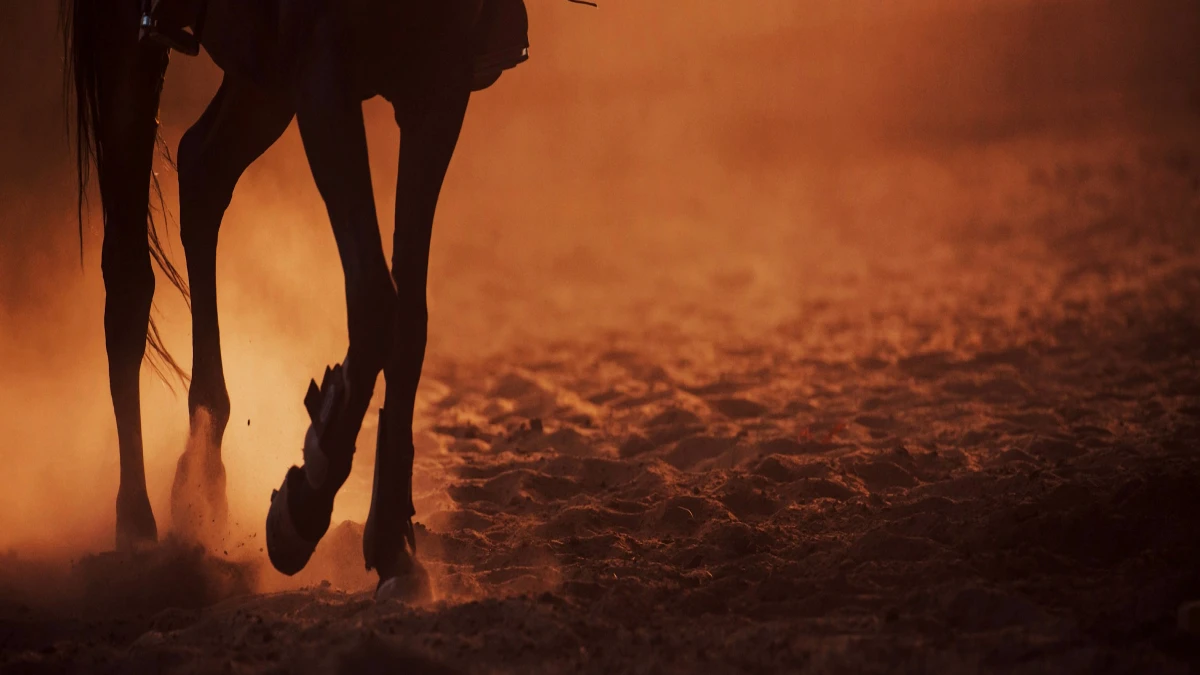Cribbing in Horses: Causes and Management
Jul 22, 2023 by Jamie Finch

Cribbing is a perplexing behaviour that has captured the intrigue of horse owners, trainers, and caretakers alike.
This enigmatic action, sometimes called crib-biting or wind-sucking, is displayed by particular equine companions. In this blog post, I will explore cribbing, aiming to unravel the intricate web of its causes, grasp the effects on our equine friends, and discern holistic solutions to manage and mitigate this behaviour for the well-being of our beloved horses.
Unveiling the Cribbing Behaviour
Detecting cribbing behaviour at its earliest stages is paramount to initiating appropriate intervention and care.
By recognising the following tell-tale signs, horse owners can be proactive in addressing cribbing:
Gnawing Solid Objects: Using its incisor teeth, a cribbing horse displays repetitive gripping and pulling actions on solid objects, such as stall doors or fence rails.
Audible Grunting or Gulping: A distinctive feature of cribbing is the emission of grunting or gulping sounds as the horse swallows air during the behaviour.
Visible Dental Changes: Over time, cribbing can lead to abnormal wear on the horse's incisor teeth, which can be observable during dental examinations.
Physical Markers: Cribbing may cause excessive salivation, swelling in the upper neck, and enlargement of the throat muscles (ventral neck muscles).
Unravelling the Underlying Reasons Behind Cribbing
The causes of cribbing are multifaceted, and uncovering the triggers behind this behaviour is essential for devising effective management strategies.
Several factors can contribute to cribbing, including:
Stress and Boredom: Horses subjected to confinement without adequate mental and physical stimulation may resort to cribbing as a coping mechanism for stress and boredom.
Gastrointestinal Discomfort: Research has suggested a potential link between cribbing and gastrointestinal discomfort, as horses may engage in this behaviour to alleviate pain.
Social Isolation: Being social herd animals, horses thrive on companionship. Lack of social interaction with other horses can lead to cribbing in some individuals.
Nutritional Imbalances: Diets that lack sufficient forage and are high in concentrates may contribute to cribbing tendencies.
Management Practices: Certain management practices, such as limited turnout or irregular feeding schedules, can play a role in triggering cribbing behaviour.
Unveiling the Impact of Cribbing on Equine Well-being
The consequences of cribbing can have significant implications for a horse's overall health and well-being, encompassing the following:
Dental Health Issues: The repetitive grasping and pulling motion during cribbing can lead to dental problems, such as worn-down incisors, affecting the horse's ability to chew properly.
Digestive Discomfort: Ingesting air during cribbing can increase the risk of colic and other digestive issues, potentially causing discomfort and pain.
Weight Loss and Nutritional Concerns: Prolonged cribbing may interfere with a horse's ability to eat and digest food effectively, leading to weight loss and potential nutritional deficiencies.
Muscular Strain: The repetitive motion of cribbing can strain the muscles of the neck and shoulder, potentially causing discomfort and reducing the horse's overall mobility.
Managing and Mitigating Cribbing Behaviour
To promote the well-being of our equine companions, it is imperative to adopt a holistic approach to managing and mitigating cribbing behaviour. Proactive strategies include:
Abundant Turnout: Providing horses with ample turnout time in a secure and spacious pasture allows for natural behaviours and social interaction, helping reduce stress and boredom.
Enrichment Activities: Implementing environmental enrichment, such as slow-feed hay nets, interactive toys, and obstacle courses, stimulates the horse's mind and reduces boredom.
Balanced Diet: A well-balanced diet with plenty of high-quality forage supports a healthy digestive system and encourages natural grazing behaviours.
Social Engagement: Whenever possible, housing horses in groups fosters social interaction and minimises feelings of isolation, promoting a sense of security and contentment.
Stress Reduction: Identifying and addressing potential stressors in the horse's environment, such as loud noises or sudden changes in routine, helps reduce anxiety and cribbing tendencies.
Conclusion
Cribbing remains a multifaceted and intricate horse behaviour, requiring thorough understanding and empathetic care.
By delving into the underlying causes, grasping the far-reaching effects, and implementing thoughtful and holistic solutions, you can create a supportive environment where our equine companions thrive.
Each horse is unique, requiring individualised and patient management to address cribbing behaviour effectively. Through proactive measures and informed attention, you can create a world where cribbing is minimised, and your horse leads a content and fulfilled life cherished as the majestic creatures they are.
Explore More Topics
Understanding Behavioural Changes in Horses
When a horse’s behaviour suddenly changes, it’s rarely without cause. This blog explores the physical, emotional, and environmental reasons behind behavioural shifts — and how owners can respond with understanding, clarity, and care.
May 31, 2025
10 Essential Groundwork Exercises to Improve Equine Agility
This blog post, "10 Essential Groundwork Exercises to Improve Equine Agility," provides a comprehensive guide for horse owners looking to enhance their horse's agility, coordination, and responsiveness through progressive groundwork. Each exercise includes step-by-step instructions, explains why the exercise is important for building trust, focus, and physical conditioning, and details how these skills translate into improved performance in agility courses and other equestrian pursuits.
Oct 28, 2024
Top Tips for First-Time Horse Owners: How Equine Insurance Can Give You Peace of Mind
Equine insurance is a crucial safety net for horse owners, providing financial protection against unexpected costs related to veterinary care, accidents, injuries, and liability claims. Whether you're a first-time owner or an experienced equestrian, insuring your horse offers peace of mind by covering expensive vet bills, public liability issues, theft, and even death.
Oct 23, 2024







